What Are The Bright Spots On Ceres?
What Are the Bright Spots on Ceres?

Dwarf planet Ceres has more than 130 bright areas, and most of them are associated with impact craters. Now, Ceres has revealed some of its well-kept secrets in two new studies in the journal Nature, thanks to data from our Dawn spacecraft.
Two studies have been looking into the mystery behind these bright areas. One study identifies this bright material as a kind of salt, while the other study suggests the detection of ammonia-rich clays.
Study authors write that the bright material is consistent with a type of magnesium sulfate called hexahydrite. A different type of magnesium sulfate is familiar on Earth as Epsom salt.

Researchers, using images from Dawn’s framing camera, suggest that these salt-rich areas were left behind when water-ice sublimated in the past. Impacts from asteroids would have unearthed the mixture of ice and salt.
An image of Occator Crater (below) shows the brightest material on Ceres. Occator itself is 60 miles in diameter, and its central pit, covered by this bright material, measures about 6 miles wide. With its sharp rim and walls, it appears to be among the youngest features on the dwarf planet.

In the second nature study, members of the Dawn science team examined the composition of Ceres and found evidence for ammonia-rich clays. Why is this important?
Well, ammonia ice by itself would evaporate on Ceres today, because it is too warm. However, ammonia molecules could be stable if present in combination with other minerals. This raises the possibility that Ceres did not originate in the main asteroid belt between Mars and Jupiter, where it currently resides. But instead, might have formed in the outer solar system! Another idea is that Ceres formed close to its present position, incorporating materials that drifted in from the outer solar system, near the orbit of Neptune, where nitrogen ices are thermally stable.

As of this week, our Dawn spacecraft has reached its final orbital altitude at Ceres (about 240 miles from the surface). In mid-December, it will begin taking observations from this orbit, so be sure to check back for details!
ake sure to follow us on Tumblr for your regular dose of space: http://nasa.tumblr.com
More Posts from Smartler and Others

My life in a picture

EVERYTIME IT’S ON MY DASHBOARD I WATCH IT AND CRY BEST VIDEO

As a single woman, when I see a man
funny tumblr [via imgur]
What are some of your favorite science segments from the Tonight Show?
Hey, @luminarysiralexrluma!
We <3 science here at The Tonight Show!
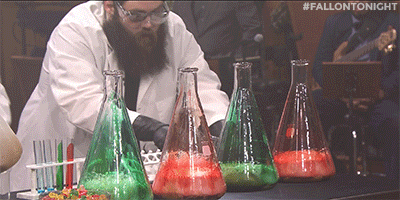
Kevin Delaney has shown us how to make toothpaste for elephants!

We’ve made ping-pong balls fly.

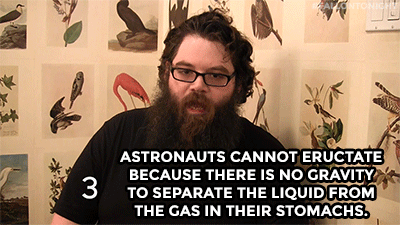
And Kevin even hung out backstage to share 8 interesting science facts!

Jimmy and Bill Gates tried poop water.

Jimmy, Julia Louis-Dreyfus, and Astronaut Scott Kelly became friends via Twitter!

Neil DeGrasse Tyson schooled us on physics!

And we tried to sell Charles Barkley on space travel!
Science rules!
Hope your week is out of this world! - Noah





There are many different ways to make nanomaterials but weaving, the oldest and most enduring method of making fabrics, has not been one of them – until now. An international collaboration led by scientists at the U.S. Department of Energy (DOE)’s Lawrence Berkeley National Laboratory (Berkeley Lab) and the University of California (UC) Berkeley, has woven the first three-dimensional covalent organic frameworks (COFs) from helical organic threads. The woven COFs display significant advantages in structural flexibility, resiliency and reversibility over previous COFs – materials that are highly prized for their potential to capture and store carbon dioxide then convert it into valuable chemical products.
“We have taken the art of weaving into the atomic and molecular level, giving us a powerful new way of manipulating matter with incredible precision in order to achieve unique and valuable mechanical properties,” says Omar Yaghi, a chemist who holds joint appointments with Berkeley Lab’s Materials Sciences Division and UC Berkeley’s Chemistry Department, and is the co-director of the Kavli Energy NanoScience Institute (Kavli-ENSI).
“Weaving in chemistry has been long sought after and is unknown in biology,” Yaghi says. “However, we have found a way of weaving organic threads that enables us to design and make complex two- and three-dimensional organic extended structures.”
Continue Reading.
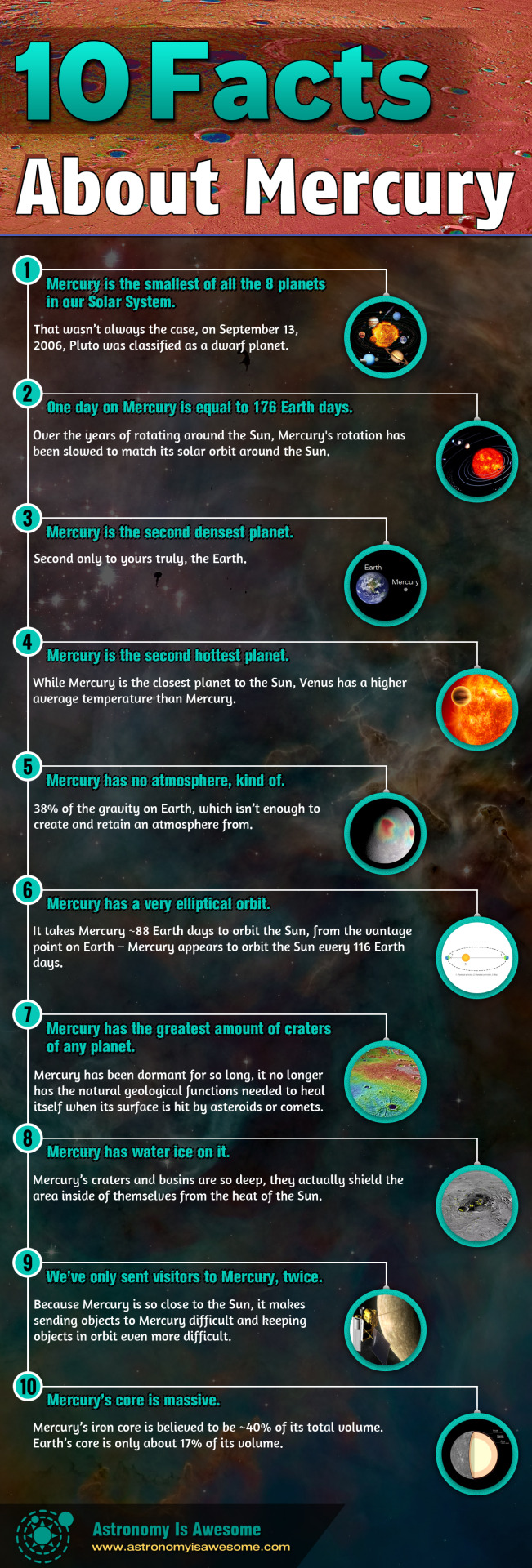
Check out our 10 Facts About Mercury #Infographic!
http://astronomyisawesome.com/infographics/10-facts-about-mercury/
With #Mercury being the closest planet to the Sun, it’s very difficult to send spacecraft there to visit it, gather information and relay that back to us here on Earth. Nonetheless, we compiled all we know into this awesome infographic!
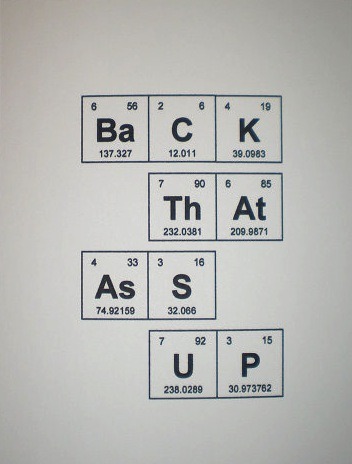
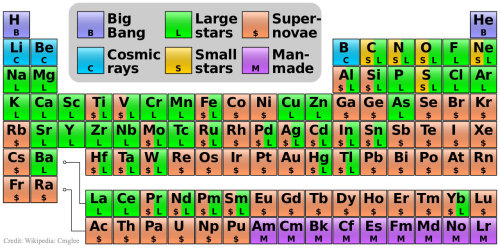
Where Your Elements Came From
(via APOD; Image Credit: Cmglee (Own work) CC BY-SA 3.0 or GFDL, via Wikimedia Commons )
The hydrogen in your body, present in every molecule of water, came from the Big Bang. There are no other appreciable sources of hydrogen in the universe. The carbon in your body was made by nuclear fusion in the interior of stars, as was the oxygen. Much of the iron in your body was made during supernovas of stars that occurred long ago and far away. The gold in your jewelry was likely made from neutron stars during collisions that may have been visible as short-duration gamma-ray bursts. Elements like phosphorus and copper are present in our bodies in only small amounts but are essential to the functioning of all known life. The featured periodic table is color coded to indicate humanity’s best guess as to the nuclear origin of all known elements. The sites of nuclear creation of some elements, such as copper, are not really well known and are continuing topics of observational and computational research.
-
 leda-timeandspace liked this · 1 year ago
leda-timeandspace liked this · 1 year ago -
 raineszramski liked this · 7 years ago
raineszramski liked this · 7 years ago -
 blue-sun-king liked this · 8 years ago
blue-sun-king liked this · 8 years ago -
 flyingblueh reblogged this · 8 years ago
flyingblueh reblogged this · 8 years ago -
 tristanshoard reblogged this · 8 years ago
tristanshoard reblogged this · 8 years ago -
 69orca liked this · 8 years ago
69orca liked this · 8 years ago -
 aphelionluna-blog liked this · 9 years ago
aphelionluna-blog liked this · 9 years ago -
 blog-generouscollectornightmare liked this · 9 years ago
blog-generouscollectornightmare liked this · 9 years ago -
 lost-locket liked this · 9 years ago
lost-locket liked this · 9 years ago -
 heavy-breathing-meme liked this · 9 years ago
heavy-breathing-meme liked this · 9 years ago -
 blood-b0y liked this · 9 years ago
blood-b0y liked this · 9 years ago -
 yellowgrowngreen liked this · 9 years ago
yellowgrowngreen liked this · 9 years ago -
 myrangerover-love-blog reblogged this · 9 years ago
myrangerover-love-blog reblogged this · 9 years ago -
 yakmanistan reblogged this · 9 years ago
yakmanistan reblogged this · 9 years ago -
 looje22 liked this · 9 years ago
looje22 liked this · 9 years ago -
 tyrannosrex reblogged this · 9 years ago
tyrannosrex reblogged this · 9 years ago -
 unlikelyfairytale reblogged this · 9 years ago
unlikelyfairytale reblogged this · 9 years ago -
 glitchtechscience reblogged this · 9 years ago
glitchtechscience reblogged this · 9 years ago -
 allofusdust liked this · 9 years ago
allofusdust liked this · 9 years ago -
 thanksforthedinosaur reblogged this · 9 years ago
thanksforthedinosaur reblogged this · 9 years ago -
 dragoni liked this · 9 years ago
dragoni liked this · 9 years ago -
 marsalexandra reblogged this · 9 years ago
marsalexandra reblogged this · 9 years ago -
 randomcause liked this · 9 years ago
randomcause liked this · 9 years ago -
 lethalexa reblogged this · 9 years ago
lethalexa reblogged this · 9 years ago